+ Available on ARRL Audio News + Public Service: Late Season Tropical Storm Ida Comes Calling on Gulf Coast 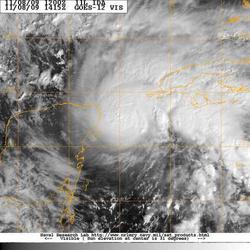 Category 1 Hurricane Ida, just before entering the Gulf of Mexico this past weekend. [Image courtesy of the Naval Research Lab] |
With only weeks to go before the end of the 2009 hurricane season, Tropical Storm Ida formed off the coast of Nicaragua, making landfall as a hurricane in the morning hours of November 5. The storm lost significant strength as it moved through Nicaragua and Honduras, only to reemerge in the Caribbean a day later, impacting El Salvador and Mexico. Ida gained strength, becoming a Category 2 storm with winds peaking at 105 miles per hour in the Gulf of Mexico. The path for Ida at this point was clearly toward the Gulf Coast of the US, with a projected landfall somewhere between Louisiana and the Florida panhandle. As Ida's path became more focused, Amateur Radio operators and ARES® groups concentrated on increasing their level of readiness should there be a need to respond. Read more here. + Operating: ARRL Sweepstakes Takes to the Phone Bands Next Weekend 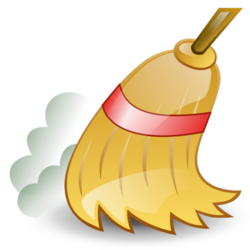 The SSB portion of the ARRL November Sweepstakes -- the premier domestic HF contest -- takes place next weekend, running 2100 UTC Saturday, November 21 to 0300 Monday, November 23 (or 4 PM Saturday to 10 PM Sunday EST). According to ARRL Contest Branch Manager Sean Kutzko, KX9X, the event -- first called "The January Contest" -- started back in 1929 as a competition for handling formal traffic messages. "Sweepstakes is one of the oldest traditions in Amateur Radio," Kutzko said. "The contest exchange contains more elements than usual, an homage to traffic-handling. If you have never participated in Sweepstakes, you are really missing out on some serious fun!" Read more here. The SSB portion of the ARRL November Sweepstakes -- the premier domestic HF contest -- takes place next weekend, running 2100 UTC Saturday, November 21 to 0300 Monday, November 23 (or 4 PM Saturday to 10 PM Sunday EST). According to ARRL Contest Branch Manager Sean Kutzko, KX9X, the event -- first called "The January Contest" -- started back in 1929 as a competition for handling formal traffic messages. "Sweepstakes is one of the oldest traditions in Amateur Radio," Kutzko said. "The contest exchange contains more elements than usual, an homage to traffic-handling. If you have never participated in Sweepstakes, you are really missing out on some serious fun!" Read more here.
+ Operating: WRTC 2010 Organizers Announce Teams 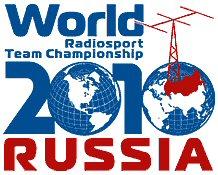 Last month, after a grueling selection process, the organizers of the 2010 World Radiosport Team Championships (WRTC) selected the 44 team leaders who will compete in the event next year. These 44 team leaders, representing all six continents, have each chosen a partner. The rules state that while the leader's partner may be from a different call sign area, they must be from the same country as the leader. WRTC, held every few years, takes place during the 2010 IARU HF World Championships, July 10-11 and will be held just outside Moscow. Read more here. Last month, after a grueling selection process, the organizers of the 2010 World Radiosport Team Championships (WRTC) selected the 44 team leaders who will compete in the event next year. These 44 team leaders, representing all six continents, have each chosen a partner. The rules state that while the leader's partner may be from a different call sign area, they must be from the same country as the leader. WRTC, held every few years, takes place during the 2010 IARU HF World Championships, July 10-11 and will be held just outside Moscow. Read more here.
Atlantic Division to Host Webinar  Click here to register for The Emotional Go Kit: Are You Prepared? |
Periodically, the ARRL's Atlantic Division hosts a "webinar" -- an interactive Web-based seminar, designed to facilitate communication between a small number of presenters and a large remote audience using the Internet. On Friday, November 13 at 9 PM EST, Chuck Blocher, PhD, KC2IQV, will present a webinar entitled The Emotional Go Kit: Are You Prepared? "As hams serve as emergency and public service communicators, we prepare our Go Kits and necessary gear to provide essential communications," said webinar sponsor ARRL Atlantic Division Director Bill Edgar, N3LLR. "How prepared are you concerning your emotional wellness during one of these events? This webinar addresses the emotional well-being and preparedness for those Amateur Radio communicators who participate in emergency and public service situations." Please click here to register for this informative, interactive Internet meeting. + Amateur Radio in Space: STS 129 -- Stocking the International Space Station 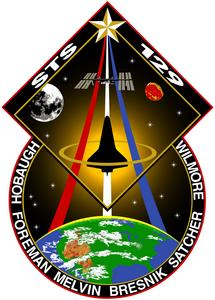 Besides taking spare parts to the International Space Station (ISS) this coming Monday, the space shuttle Atlantis (STS-129) will deliver the module antennas for Columbus -- the laboratory built by the European Space Agency (ESA) and host of two Amateur Radio on the International Space Station (ARISS) antennas. "Lou McFadin, W5DID, a member of the AMSAT Board of Directors and a key volunteer for ARISS, showed the astronauts the best ways for them to safely unpack and assemble the antennas and associated cables once they and the hardware reach the ISS," said ARRL ARISS Program Manager Rosalie White, K1STO. "They reviewed how to maneuver and install the antennas during the spacewalk. Lou also oversaw the re-packing of the antennas and the onboard flight kit that accompanies shipments going to the ISS." Read more here. Besides taking spare parts to the International Space Station (ISS) this coming Monday, the space shuttle Atlantis (STS-129) will deliver the module antennas for Columbus -- the laboratory built by the European Space Agency (ESA) and host of two Amateur Radio on the International Space Station (ARISS) antennas. "Lou McFadin, W5DID, a member of the AMSAT Board of Directors and a key volunteer for ARISS, showed the astronauts the best ways for them to safely unpack and assemble the antennas and associated cables once they and the hardware reach the ISS," said ARRL ARISS Program Manager Rosalie White, K1STO. "They reviewed how to maneuver and install the antennas during the spacewalk. Lou also oversaw the re-packing of the antennas and the onboard flight kit that accompanies shipments going to the ISS." Read more here.
+ Amateur Radio in Space: Idaho School Incorporates ARISS into Curriculum  Three students at Garfield Elementary School in Boise, Idaho play "Where's the Remote?" in preparation for a QSO with the International Space Station. |
With more than 500 Amateur Radio on the International Space Station (ARISS) contacts conducted, thousands of students have experienced intriguing science and technology lessons -- plus the thrill of speaking with an astronaut who was on the International Space Station (ISS). According to ARRL ARISS Program Manager Rosalie White, K1STO, each school uses the ARISS events in different ways. From school to school, ARISS volunteers see a great range in the types of activities around the event, including integrating the activities into each grade level's curriculum. The lesson in common to all schools includes discussions on what Amateur Radio is, what ARISS is and how the worldwide ARISS Team works together. Click here to read about how one elementary school in Idaho integrated Amateur Radio, space -- and more -- into their curriculum. ARRL Says "Thank You" to Veterans On Wednesday, November 11, Veterans Day -- called Remembrance Day or Armistice Day outside the US -- was celebrated all over the world. Originally a holiday that marked the end of World War I -- the "War to End All Wars" -- has been set aside to honor all who have served their country. It was on November 11, 1918, on the 11th hour of the 11th day of the 11th month, that Germany signed the Armistice, formally ending the hostilities that had been ongoing since 1914. 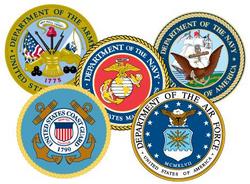 The ARRL would like to take this opportunity to thank our service veterans. Whether they served on active duty or reserve, during peace time or time of conflict, they served their county with honor. We also would be remiss if we did not remember the families of those veterans who kept the homefires burning bright; without their love and support, our veterans would have indeed been alone. The ARRL would like to take this opportunity to thank our service veterans. Whether they served on active duty or reserve, during peace time or time of conflict, they served their county with honor. We also would be remiss if we did not remember the families of those veterans who kept the homefires burning bright; without their love and support, our veterans would have indeed been alone.
ARRL Headquarters has its share of service veterans: Contributing Editor Al Brogdon, W1AB (Army); Publications Sales Associate Mark Dzamba, KB1FMY (Air Force); Assistant VEC Manager Perry Green, WY1O (Army); Volunteer Archivist Charles Griffen, W1GYR (Air Force); Technical Editor Joel Hallas, W1ZR (Army); News Editor S. Khrystyne Keane, K1SFA (Coast Guard); DXCC Manager Bill Moore, NC1L (Army); Reprints Specialist Tony Nesta, AA1RZ (Navy); Membership and Volunteer Programs Manager Dave Patton, NN1N (Navy); Technical Relations Specialist Jon Siverling, WB3ERA (Army); Field and Regulatory Correspondent Chuck Skolaut, K0BOG (Air Force); Education & Technology Program Coordinator Mark Spencer, WA8SME (Air Force), and Archivist Perry Williams, W1UED (Air Force). Thank you for your service -- your sacrifice and the sacrifice of your fellow service members is not forgotten. Now You Know!: US Call Signs Not Issued by the FCC 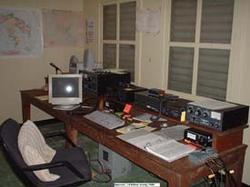 The Amateur Radio station at Gitmo. [Photo courtesy of Chuck Harding, N8CH/KG4NW] |
If you're an American ham, chances are that your call sign was issued by the Federal Communications Commission. A "no brainer," right? Well, if you're an American ham who happens to be stationed at Guantanamo Bay or at one of the US bases in the Antarctic, your call sign is not issued by the FCC -- it's issued by the base commander. Guantanamo Bay (or Gitmo as it's commonly called) uses the KG4 prefix, followed by a two-letter suffix; this block is reserved exclusively for American hams at Gitmo. As for Antarctica, the Antarctic Treaty, signed on December 1, 1959 (and entered into force on June 23, 1961), established the legal framework for the management of Antarctica, including allocation of amateur call signs; the National Science Foundation received their block on July 1, 1959. US military hams in Japan and Korea are also issued special call signs: The FCC once issued call signs to hams who lived in the Caroline Islands and the Marshall Islands. Even though these entities -- former United Nations Trust Territories -- now have their own sovereignty (and DXCC prefixes), the FCC will not issue call signs in the following blocks: - KC6AA-KC6ZZ -- KC6 was two DXCC entities: The Eastern Caroline Islands and the Western Caroline Islands. The Eastern Carolines became the Federated States of Micronesia (V6) and the Western Carolines became the Republic of Palau (T8).
- KX6AA-KX6ZZ -- the former Marshall Islands, now the Republic of the Marshall Islands (V73).
You can find out more on the FCC's Web site. Now you know! Solar Update 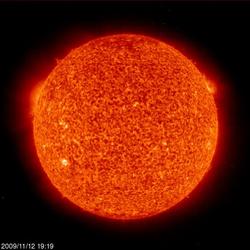 In for Tad "While the wonders of nature exploring" Cook, K7RA, reports: Sunspot region 1029 disappeared after October 30, as it began transiting the Sun's back side. Six days after it was gone, a new region -- region 1030 -- appeared for several days. By November 8, region 1030 had faded away and looked like other weak spots we've seen over the past couple of years, except they appeared for one day with a sunspot number of 11. Sunspot region 1030 ran for three days with sunspot numbers of 15, 16 and 11. Then on November 9, the sunspot region re-emerged, with sunspot numbers of 14, 13 and 11 through November 11. While 1030 passes over the Sun's western limb, we can still see sunspot region 1029 transiting the far side of our local star, now approaching the eastern horizon. None of this observation would be possible but for the STEREO mission. Old region 1029 appears as a bright area of magnetic disturbance, and we can't actually determine what the sunspot number or the total area of the region might be, but it still appears to have a large and robust magnetic signature. The 45 day Air Force and NOAA Ap and flux forecast gives us some clue about the dates it will emerge into view, and when it is most directly facing Earth. Predicted solar flux is 72 for November 12-13, 73 on November 14-15, 74 on November 16-17, 75 on November 18-21 and 80 for November 22-24. After that, the forecast shows it declining to 75, 72 and 70. This suggests it might reach the most geoeffective position, that is, the position where it is near the Sun's central meridian relative to the Earth, around November 22-24. Conditions have been good, with continued weak or missing solar wind, and very quiet geomagnetic indicators. Look for more information in the Solar Update, available on the ARRL Web site on Friday, November 13. For more information concerning radio propagation, visit the ARRL Technical Information Service Propagation page. This week's "Tad Cookism" brought to you by John Keats' To Some Ladies. In for Tad "While the wonders of nature exploring" Cook, K7RA, reports: Sunspot region 1029 disappeared after October 30, as it began transiting the Sun's back side. Six days after it was gone, a new region -- region 1030 -- appeared for several days. By November 8, region 1030 had faded away and looked like other weak spots we've seen over the past couple of years, except they appeared for one day with a sunspot number of 11. Sunspot region 1030 ran for three days with sunspot numbers of 15, 16 and 11. Then on November 9, the sunspot region re-emerged, with sunspot numbers of 14, 13 and 11 through November 11. While 1030 passes over the Sun's western limb, we can still see sunspot region 1029 transiting the far side of our local star, now approaching the eastern horizon. None of this observation would be possible but for the STEREO mission. Old region 1029 appears as a bright area of magnetic disturbance, and we can't actually determine what the sunspot number or the total area of the region might be, but it still appears to have a large and robust magnetic signature. The 45 day Air Force and NOAA Ap and flux forecast gives us some clue about the dates it will emerge into view, and when it is most directly facing Earth. Predicted solar flux is 72 for November 12-13, 73 on November 14-15, 74 on November 16-17, 75 on November 18-21 and 80 for November 22-24. After that, the forecast shows it declining to 75, 72 and 70. This suggests it might reach the most geoeffective position, that is, the position where it is near the Sun's central meridian relative to the Earth, around November 22-24. Conditions have been good, with continued weak or missing solar wind, and very quiet geomagnetic indicators. Look for more information in the Solar Update, available on the ARRL Web site on Friday, November 13. For more information concerning radio propagation, visit the ARRL Technical Information Service Propagation page. This week's "Tad Cookism" brought to you by John Keats' To Some Ladies.
+ International: Norwegian Amateurs Receive New Privileges 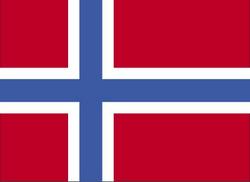 On November 6, radio amateurs in Norway were granted privileges on three new bands, as well as primary status on the extended 40 meter band and a frequency extension on 12 meters. According to IARU Vice President Ole Garpestad, LA2RR, Norwegian amateurs received new secondary user privileges on 60 meters (5.260-5.410 MHz), the 600 meter band (493-510 kHz) and in five blocks in the 4 meter (70 MHz) band. Amateur Radio operators in Norway will also enjoy upgraded privileges on 40 meters, moving from secondary to primary users between 7.100-7.200 MHz and 1000 W output. They have also received a new secondary allocation from 24.740-24.890 MHz in the 12 meter band, expanding upon Norway's existing primary allocation of 24.890-24.990 MHz. Garpestad said that "minor adjustments" were also made in the SHF (3-30 GHz) and EHF (30-300 GHz) portions of the band. "Congratulations to our Norwegian colleagues," said ARRL Chief Executive Officer David Sumner, K1ZZ. "The new domestic allocations in Norway are consistent with the present and future spectrum requirements for the Amateur Service as determined by the IARU Administrative Council. We hope that other administrations will consider taking similar steps." On November 6, radio amateurs in Norway were granted privileges on three new bands, as well as primary status on the extended 40 meter band and a frequency extension on 12 meters. According to IARU Vice President Ole Garpestad, LA2RR, Norwegian amateurs received new secondary user privileges on 60 meters (5.260-5.410 MHz), the 600 meter band (493-510 kHz) and in five blocks in the 4 meter (70 MHz) band. Amateur Radio operators in Norway will also enjoy upgraded privileges on 40 meters, moving from secondary to primary users between 7.100-7.200 MHz and 1000 W output. They have also received a new secondary allocation from 24.740-24.890 MHz in the 12 meter band, expanding upon Norway's existing primary allocation of 24.890-24.990 MHz. Garpestad said that "minor adjustments" were also made in the SHF (3-30 GHz) and EHF (30-300 GHz) portions of the band. "Congratulations to our Norwegian colleagues," said ARRL Chief Executive Officer David Sumner, K1ZZ. "The new domestic allocations in Norway are consistent with the present and future spectrum requirements for the Amateur Service as determined by the IARU Administrative Council. We hope that other administrations will consider taking similar steps."
 This Week on the Radio 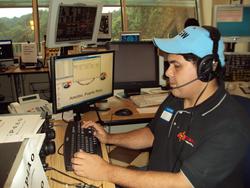 Angel Santana, WP3GW, activates Special Event call sign KP4AO from inside the control room at Arecibo Observatory in Puerto Rico earlier this month. Would you like to see yourself in The ARRL Letter? Send us a picture of you operating your rig -- tell us your name and call sign and what you're doing! Don't forget to tell us who took your picture; if they have a call sign, let us know. Send your pictures to ARRL News Editor S. Khrystyne Keane, K1SFA -- be sure to put "ARRL Letter Photos" in the subject line of your e-mail. |
This week, look for an NCCC Sprint on November 13. The Bill Windle QSO Party is November 14. The Worked All Europe DX Contest (RTTY), the Kentucky QSO Party, the JIDX Phone Contest is November 14-15 and the OK/OM DX Contest (CW) are November 14-15. The CQ-WE Contest (SSB, CW and Digital) is November 14-16. The Run for the Bacon QRP Contest is November 16 and the NAQCC Straight Key/Bug Sprint is November 19. Next week, the ARRL Sweepstakes Contest (SSB) is November 21-23. The Feld Hell Sprint is November 21. The LZ DX Contest is November 21-22 and the NA Collegiate ARC Championship (SSB) is November 21-23. The EU PSK63 QSO Party is November 22. All dates, unless otherwise stated, are UTC. See the ARRL Contest Branch page, the ARRL Contest Update and the WA7BNM Contest Calendar for more info. Looking for a Special Event station? Be sure to check out the ARRL Special Event Station Web page. ARRL Continuing Education Course Registration  Registration remains open through Sunday, November 22, 2009, for these online course sessions beginning on Friday, December 4, 2009: Amateur Radio Emergency Communications Level 1; Antenna Modeling; Radio Frequency Interference; Antenna Design and Construction; Ham Radio (Technician) License Course; Propagation; Analog Electronics, and Digital Electronics. To learn more, visit the CEP Course Listing page or contact the Continuing Education Program Coordinator. Registration remains open through Sunday, November 22, 2009, for these online course sessions beginning on Friday, December 4, 2009: Amateur Radio Emergency Communications Level 1; Antenna Modeling; Radio Frequency Interference; Antenna Design and Construction; Ham Radio (Technician) License Course; Propagation; Analog Electronics, and Digital Electronics. To learn more, visit the CEP Course Listing page or contact the Continuing Education Program Coordinator.
| 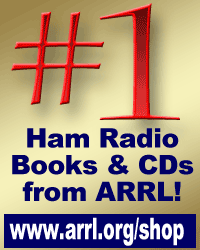
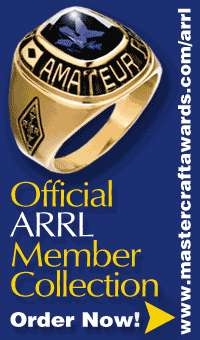
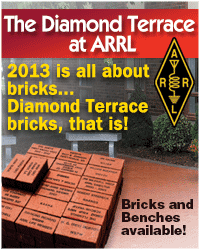




 |


 The SSB portion of the
The SSB portion of the  Last month, after a grueling selection process, the organizers of the 2010 World Radiosport Team Championships (WRTC) selected the 44 team leaders who will compete in the event next year. These 44 team leaders, representing all six continents, have each chosen a partner. The rules state that while the leader's partner may be from a different call sign area, they must be from the same country as the leader. WRTC, held every few years, takes place during the 2010 IARU HF World Championships, July 10-11 and will be held just outside Moscow. Read more
Last month, after a grueling selection process, the organizers of the 2010 World Radiosport Team Championships (WRTC) selected the 44 team leaders who will compete in the event next year. These 44 team leaders, representing all six continents, have each chosen a partner. The rules state that while the leader's partner may be from a different call sign area, they must be from the same country as the leader. WRTC, held every few years, takes place during the 2010 IARU HF World Championships, July 10-11 and will be held just outside Moscow. Read more 
 Besides taking spare parts to the International Space Station (ISS) this coming Monday, the space shuttle Atlantis (STS-129) will deliver the module antennas for Columbus -- the laboratory built by the European Space Agency (ESA) and host of two Amateur Radio on the International Space Station (ARISS) antennas. "Lou McFadin, W5DID, a member of the AMSAT Board of Directors and a key volunteer for ARISS, showed the astronauts the best ways for them to safely unpack and assemble the antennas and associated cables once they and the hardware reach the ISS," said ARRL ARISS Program Manager Rosalie White, K1STO. "They reviewed how to maneuver and install the antennas during the spacewalk. Lou also oversaw the re-packing of the antennas and the onboard flight kit that accompanies shipments going to the ISS." Read more
Besides taking spare parts to the International Space Station (ISS) this coming Monday, the space shuttle Atlantis (STS-129) will deliver the module antennas for Columbus -- the laboratory built by the European Space Agency (ESA) and host of two Amateur Radio on the International Space Station (ARISS) antennas. "Lou McFadin, W5DID, a member of the AMSAT Board of Directors and a key volunteer for ARISS, showed the astronauts the best ways for them to safely unpack and assemble the antennas and associated cables once they and the hardware reach the ISS," said ARRL ARISS Program Manager Rosalie White, K1STO. "They reviewed how to maneuver and install the antennas during the spacewalk. Lou also oversaw the re-packing of the antennas and the onboard flight kit that accompanies shipments going to the ISS." Read more 
 The ARRL would like to take this opportunity to thank our service veterans. Whether they served on active duty or reserve, during peace time or time of conflict, they served their county with honor. We also would be remiss if we did not remember the families of those veterans who kept the homefires burning bright; without their love and support, our veterans would have indeed been alone.
The ARRL would like to take this opportunity to thank our service veterans. Whether they served on active duty or reserve, during peace time or time of conflict, they served their county with honor. We also would be remiss if we did not remember the families of those veterans who kept the homefires burning bright; without their love and support, our veterans would have indeed been alone.
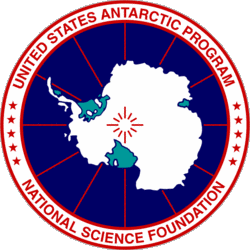 KA2AA-KA9ZZ -- reserved for US Army-authorized amateur stations in Japan.
KA2AA-KA9ZZ -- reserved for US Army-authorized amateur stations in Japan. In for Tad "
In for Tad " On November 6, radio amateurs in Norway were
On November 6, radio amateurs in Norway were 
 Registration remains open through Sunday, November 22, 2009, for these online course sessions beginning on Friday, December 4, 2009: Amateur Radio Emergency Communications Level 1; Antenna Modeling; Radio Frequency Interference; Antenna Design and Construction; Ham Radio (Technician) License Course; Propagation; Analog Electronics, and Digital Electronics. To learn more, visit the
Registration remains open through Sunday, November 22, 2009, for these online course sessions beginning on Friday, December 4, 2009: Amateur Radio Emergency Communications Level 1; Antenna Modeling; Radio Frequency Interference; Antenna Design and Construction; Ham Radio (Technician) License Course; Propagation; Analog Electronics, and Digital Electronics. To learn more, visit the 







